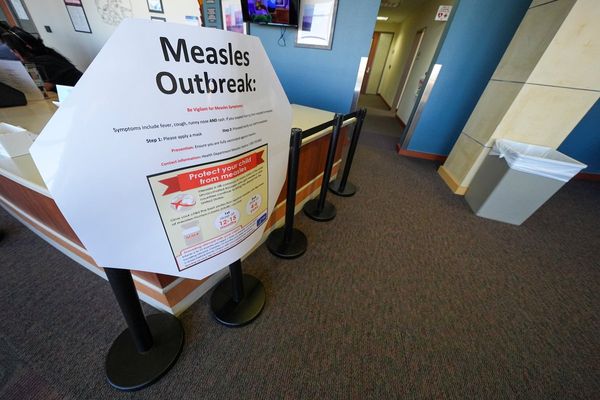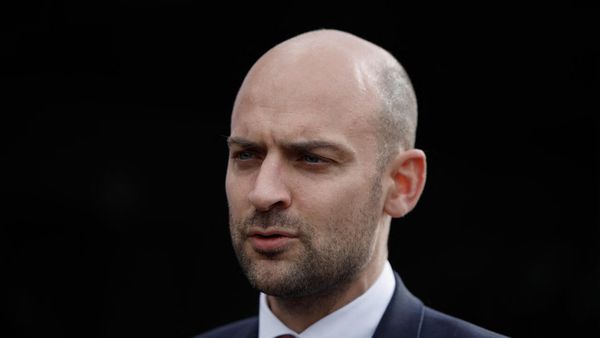On President Donald Trump's so-called "Liberation Day," when he implemented new tariffs on nearly all U.S. trading partners, the White House published an article defending tariffs.
"Despite the rhetoric from politicians and the media, studies have repeatedly shown tariffs are an effective tool for achieving economic and strategic objectives—just as they did in President Trump's first term," the White House claimed.
But the reports listed tell a different story: Tariffs raise prices and lead to less manufacturing output and costly retaliation.
Let's take a closer look at the sources cited by the White House and see what they actually say.
Claims No. 1 and No. 2: Trump's First-Term Tariffs Strengthened the Economy and Had Little Effect on Prices
The White House cites two reports to support the claim that Trump's tariffs "strengthened the U.S. economy," "led to significant reshoring," "stimulated more U.S. production of the affected goods," and "had very minor effects on downstream prices."
The main source for these claims is a 2023 report from the U.S. International Trade Commission (USITC). But the report itself includes a major caveat: "The report is not an assessment of the complete, economy-wide impacts of the tariffs…and cannot be used to draw broad conclusions about whether the tariffs…produced a net benefit for the U.S. economy overall."
Overall, the report shows that tariffs led to a nearly one-to-one price increase for steel, aluminum, and Chinese imports, prompting domestic producers to increase their prices.
While the USITC report estimates that tariffs increased U.S. metal production by $2.8 billion annually, the White House omits a key finding: Higher metals prices also reduced output in other manufacturing industries that rely on metal goods by $3.4 billion annually. That's a net loss in production.
The White House also fails to mention that USITC excluded a similar "downstream" analysis for the China tariffs. Still, the report discusses how "increasing the price of intermediate goods (directly through the tariff or indirectly through the increase in the demand for domestic substitutes) would increase the cost and lower the domestic production of downstream goods."
Claim No. 3: Trump's First-Term Tariffs Didn't Affect Inflation
Citing an article by the Economic Policy Institute, the White House says "The tariffs implemented by President Trump during his first term 'clearly show[ed] no correlation with inflation' and had only a fleeting effect on overall prices."
The piece states: "The timing of the tariffs clearly shows no correlation with inflation and eliminating tariffs could not plausibly restrain it. The bulk of the tariffs were in place before 2020, yet inflation only began accelerating in March 2021. Clearly, inflation was driven by many sources besides tariffs."
It's a mistake to confuse price increases for tariffed goods with inflation, which refers to overall price level increases. The 2018-2019 tariffs applied to imports worth less than 2 percent of U.S. gross domestic product and were phased in gradually. No, the tariffs did not drive overall inflation, as they were not large or disruptive enough to do so, but the tariffs clearly raised import prices and led to higher prices for domestic alternatives, which hurt Americans.
Claim No. 4: Tariffs Encourage Consumers To Buy American
A study by the Atlantic Council found that "tariffs would create new incentives for US consumers to buy US-made products." That's true—but switching to American-made doesn't necessarily boost U.S. production overall.
Here's why: When U.S. imports fall, the dollar tends to get stronger. That makes U.S. exports more expensive for foreign buyers, reducing demand. So while U.S. consumers may shift toward more expensive American-made products, U.S. exports can decline at the same time.
Rather than boosting production, tariffs merely redistribute it—often inefficiently. They discourage purchases of foreign goods, push consumers toward higher-priced domestic alternatives, and hurt exporters, who face reduced sales as a result.
Claim No. 5: Again, Tariffs Don't Lead to Price Increases
The White House links to a May 2024 PBS interview with then-Treasury Secretary Janet Yellen, where she claimed tariffs wouldn't lead to meaningful price increases.
"I don't believe that American consumers will see any meaningful increase in the prices that they face," said Yellen, downplaying the impact of the Biden administration's new tariffs—which were far more limited in scope than Trump's proposed tariffs. Biden's tariffs applied to $18 billion of imports (or 0.5 percent of imports), while Trump's proposed tariffs cover more than 75 percent of imports.
But a small scope doesn't mean prices won't rise. It simply means that those increases may not be directly felt by most households, given the narrow range and the types of goods targeted (e.g., electric vehicles, lithium-ion batteries, and solar cells). Higher costs for those goods can still affect businesses and consumers in those markets.
Claim No. 6: Tariffs Create Millions of Jobs and Boost Household Income
The White House relies on a single outlier estimate from a 2024 study by the Coalition for a Prosperous America to claim that a 10 percent tariff "would grow the economy by $728 billion, create 2.8 million jobs, and increase real household incomes by 5.7%."
But the study's conclusions rest on highly questionable modeling assumptions designed to produce pro-tariff results. A scathing review by international trade economists called the study "intentionally misleading," citing "key assumptions…[that find] absolutely no support in the economic literature."
Notably, the study cites the same USITC report that explicitly says it can't support broad conclusions about the effect of tariffs. It also counts the benefits of protection without acknowledging the downstream costs.
Claim No. 7: Steel and Aluminum Tariffs Created Thousands of Jobs in the Metals Industry
The White House links to multiple news articles to support its claim that "Trump's first term steel tariffs led to thousands of jobs gains in the metal industry, along with wage increases."
Most estimates suggest the tariffs led to only about 1,000 additional jobs in metal production. While domestic capacity utilization initially increased, it later dropped below the Trump administration's goals, partly due to tariff exemptions.
Since the 1970s, the U.S. government has imposed hundreds of trade barriers to protect steel producers. As of April 2025, 307 antidumping and countervailing duty orders remain in effect. Yet all these import restrictions have failed to promote overall growth in production and employment in the industry—consistent with broader evidence that tariffs rarely deliver lasting industrial revival. Instead, they tend to encourage rent seeking and discourage investment in innovation and capital expenditures.
And the modest gains in metals employment came at a much larger cost to other parts of the economy. A 2019 Federal Reserve Board paper estimated that higher input costs from the metals tariffs were associated with 0.6 percent fewer jobs—about 75,000—in the manufacturing sector. Economist David Autor and his co-authors found that tariffs did not raise overall employment in the communities they targeted, in part due to retaliatory measures that reduced job opportunities.
Claim No. 8: The 'Media Was Wrong' To Worry About Higher Prices and Retaliation
After linking to reports by The New York Times, The Hill, CNN, and Fox Business to support its tariff claims, the White House proceeds to link to articles by PBS, The New Yorker, Politico, and NPR to show that "predictably, the media was wrong" about tariffs leading to higher prices and foreign retaliation.
But even the USITC report cited by the White House estimates that the tariffs led to nearly one-to-one increases in import prices—validating concerns about rising costs. And retaliation was very real. By 2020, $97.5 billion in U.S. exports faced foreign retaliatory tariffs, according to the Congressional Research Service. Farmers alone suffered $27 billion in export losses between 2018 and 2019, according to the U.S. Department of Agriculture, leading the Trump administration to authorize $28 billion in relief payments.
The Data Are Clear
Trump's first-term tariffs provided short-term protection—but what the White House article doesn't tell you is that they ultimately raised prices and harmed the U.S. economy more than they helped. A 2019 study—updated in August 2024— found a net decrease in manufacturing employment, showing that any gains in protected sectors were outweighed by rising input costs and foreign retaliation.
Several other studies the White House did not choose to cite paint a similar picture: Trump's tariffs had a net negative effect on the American economy.
The post White House Cites Tariff Reports That Undermine Its Own Claims appeared first on Reason.com.







